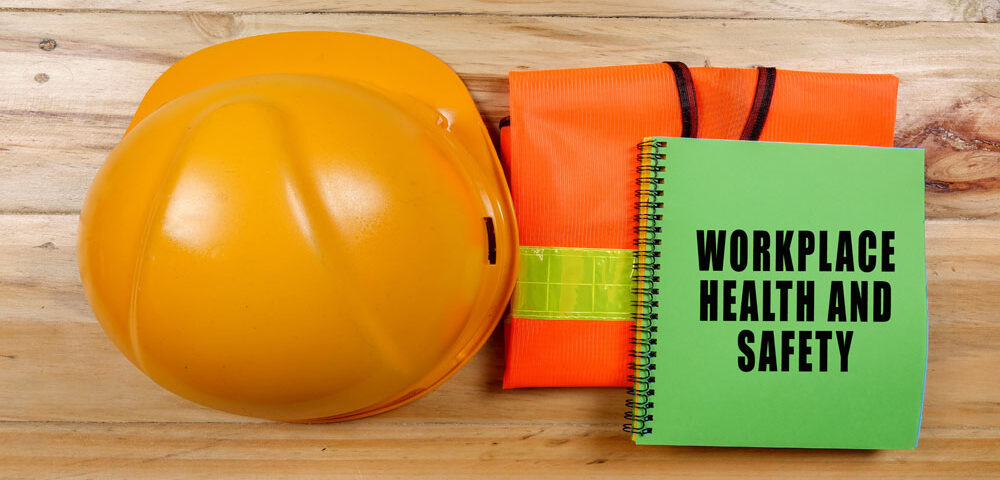Health & Safety for Business & Tradespeople in the UK
The impact of health and safety regulations on small businesses and tradespeople in the UK is multifaceted, aligning with legal obligations, business reputation, and operational efficiency. Understanding these impacts is essential for maintaining a safe work environment and ensuring compliance with UK law.
Understanding the Legal Framework
The Health and Safety at Work etc Act 1974 (HSWA) is the cornerstone of workplace safety legislation in Great Britain. This Act mandates that employers safeguard employees and the public from work-related hazards[1]. For small businesses, compliance with this legislation is crucial, though often less complex compared to larger enterprises. Depending on the size and nature of the business, health and safety measures can vary, but the ultimate goal remains the protection of all stakeholders involved[2].
Role of the Health and Safety Executive (HSE)
The Health and Safety Executive (HSE) plays a pivotal role as the enforcing authority, supported by local authorities for certain industries. The HSE provides guidelines tailored to the size and risk level of businesses, ensuring safety measures are proportionate[3]. For example, businesses with fewer than five employees are not required to document their risk assessments formally, simplifying compliance[4].
Risk Assessment and Management
Effective risk management begins with identifying potential hazards – anything that could potentially cause harm. A risk is the likelihood that the hazard could cause actual harm[5]. By conducting thorough risk assessments, small businesses can identify everyday risks and develop practical strategies to prevent accidents. It involves evaluating who might be harmed and deciding on preventative measures[6].
Health and Safety Policies
For businesses with five or more employees, a written health and safety policy is a legal requirement. Such policies communicate the company’s commitment to identifying, preventing, and managing workplace risks[4:1]. For smaller operations, while documentation might not be mandatory, the essence of the policy still needs to be effectively communicated.
Implications for Tradespeople
Tradespeople are subject to specific regulations given the often higher-risk nature of their work. Under the Management of Health and Safety at Work Regulations 1999, these businesses must conduct regular risk assessments to mitigate hazards inherent in trade activities[7]. The guidelines underline the importance of tailoring safety measures to the unique challenges posed by different types of work environments, from construction to electrical trades.
First Aid and Emergency Preparedness
An essential component of health and safety compliance is ensuring adequate emergency preparedness. This includes having accessible first aid kits and trained personnel ready to manage workplace accidents. In high-risk environments, businesses might need multiple kits and designated first-aiders certified through accredited training courses[8].
Business Reputation and Economic Benefits
Adhering to health and safety regulations is not just about avoiding legal penalties; it also plays a significant role in building a strong business reputation. A safe workplace fosters trust among employees and clients alike, enhancing both employee retention and customer loyalty. Moreover, effective safety management can lead to significant cost reductions, such as lower insurance premiums and reduced expenses related to workplace injuries[9].
Common Workplace Hazards
Understanding common workplace hazards is crucial for risk prevention. Slips, trips, and falls are among the most prevalent, accounting for 30% of non-fatal injuries[10]. Additionally, tradespeople often face risks related to manual handling, electrical hazards, and working at heights[,11]. Recognizing these hazards and implementing control measures helps businesses maintain safe environments and meet regulatory standards.
Practical Implementation and Resources
Small businesses can utilize resources provided by the HSE, such as templates for creating health and safety policies and guidance on conducting risk assessments. Engaging employees in safety discussions enhances workplace safety culture[11]. Businesses should also consider industry-specific advice from trade associations to cover unique risks associated with their operations.
Insurance Considerations
Having appropriate insurance is also a legal and safety requirement. Businesses often need employers’ liability insurance and should consider public liability insurance to cover unforeseen incidents[12]. Insurance requirements are closely tied to how well a business manages its health and safety obligations; insurers often require that employers demonstrate adequate safety procedures[13].
Overall, the adherence to health and safety regulations is a dynamic component of managing a business, demanding continuous evaluation and adaptation of safety practices. As businesses evolve, so must their health and safety frameworks, including the creation of branded risk assessments, ensuring they not only comply with the law but also support the wellbeing and success of their workforce.
Suggested Reading:
https://www.hse.gov.uk/legislation/hswa.htm
https://informi.co.uk/legal/how-does-health-safety-affect-my-business
https://iosh.com/guidance-and-resources/business/legislation-and-compliance/why-health-and-safety-is-important-in-the-workplace
https://www.hseni.gov.uk/articles/risk-assessment
https://learnq.co.uk/blog/health-and-safety/the-most-common-health-and-safety-issues-in-the-uk
https://www.unison-scotland.org.uk/safety/hslaw.html
https://www.britsafe.org/training-and-learning/informational-resources/the-health-and-safety-at-work-act-explained
https://www.waldrons.co.uk/insights/10-most-common-injuries-in-the-workplace/
https://www.tradifyhq.com/blog/health-and-safety-requirements-for-uk-trade-businesses
https://nya.org.uk/wp-content/uploads/2024/05/Health-and-safety-an-introduction-to-the-legal-background-.pdf
https://www.osha.gov/safety-management
https://www.fixradio.co.uk/fix-feed/construction-news/post/workplace-injuries-and-tool-theft-most-common-problems-tradespeople-face/
https://www.worksafe.uk.com/health-and-safety-law/the-complete-guide-to-health-and-safety-legislation/
https://www.hse.gov.uk/simple-health-safety/
https://www.simplybusiness.co.uk/knowledge/staff/health-and-safety-guide/
Cited Sources:
-
https://www.hse.gov.uk/legislation/hswa.htm↩︎
-
https://www.simplybusiness.co.uk/knowledge/staff/health-and-safety-guide/↩︎
-
https://www.britsafe.org/training-and-learning/informational-resources/the-health-and-safety-at-work-act-explained↩︎
-
https://www.hseni.gov.uk/articles/risk-assessment↩︎↩︎
-
https://www.hseni.gov.uk/articles/risk-assessment↩︎
-
https://www.simplybusiness.co.uk/knowledge/staff/health-and-safety-guide/↩︎
-
https://www.tradifyhq.com/blog/health-and-safety-requirements-for-uk-trade-businesses↩︎
-
https://www.simplybusiness.co.uk/knowledge/staff/health-and-safety-guide/↩︎
-
https://iosh.com/guidance-and-resources/business/legislation-and-compliance/why-health-and-safety-is-important-in-the-workplace↩︎
-
https://www.waldrons.co.uk/insights/10-most-common-injuries-in-the-workplace/↩︎
-
https://www.hse.gov.uk/simple-health-safety/↩︎
-
https://www.simplybusiness.co.uk/knowledge/staff/health-and-safety-guide/↩︎
-
https://informi.co.uk/legal/how-does-health-safety-affect-my-business↩︎
